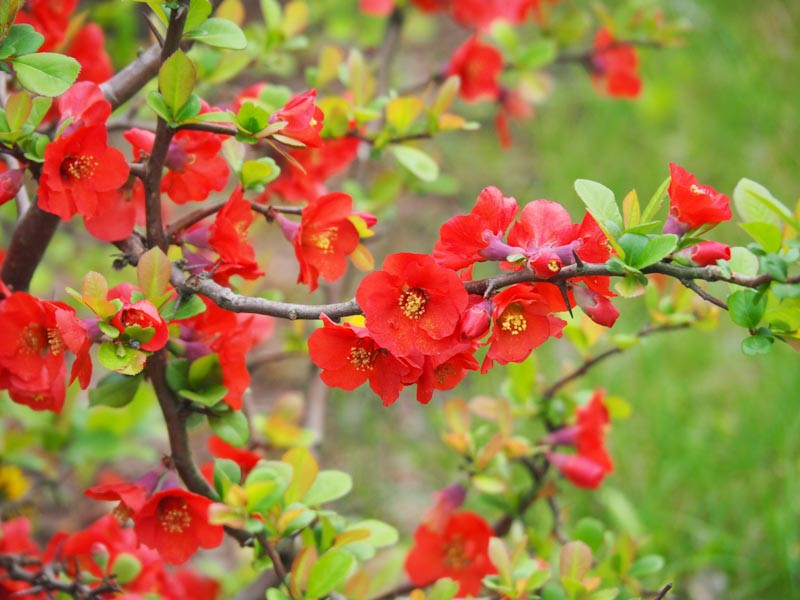Flowering Quince
Chaenomeles, often recognized as Flowering Quince, belongs to the Rosaceae family, comprising several deciduous shrub species renowned for their striking flowers and distinctive growth patterns.
Habit: Flowering Quince is known for its dense, irregular growth, forming thick, thorny barriers. Its sprawling habit can be sculpted through pruning, making it versatile for hedges or standalone ornamental displays, providing a robust yet charming presence in gardens.
Hardiness: The resilience of Flowering Quince is remarkable, enduring diverse soil conditions, though it favors nutrient-rich, well-draining environments. It prospers in anything from full sunlight to partial shade and is cold-resilient, suitable for USDA zones 4-9, braving severe winters and still presenting vivid blossoms in the growing period.
Flowers and Bloom Time: The Flowering Quince’s allure lies in its abundant blossoms that often precede leaf development, heralding spring’s onset. Its vibrant orange-red, white, or pink blossoms appear in late winter or early spring, offering a much-needed splash of color during a typically dull time in the garden. These early blooms are a vital nectar source for pollinators.
Uses: Chaenomeles’ utility extends beyond its decorative charm. Like tiny quinces, its fruit is rich in pectin, ideal for creating jams and jellies. The plant’s dense, spiky form offers a safe refuge for animals, while its blossoms draw in pollinating insects. Its sturdy character makes it a practical choice for wind barriers or privacy screens. Additionally, its attractive branches can be harvested in late winter for indoor forcing, bringing early spring indoors.
Benefits: Flowering Quince is a low-fuss plant, demanding little attention once settled. Its receptiveness to pruning allows it to fit into structured or casual garden themes. It also brings environmental advantages, like curtailing soil erosion and offering sustenance and shelter for fauna.

